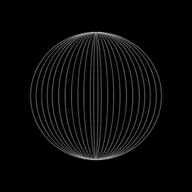Sound

Origin and Transmission of Sound
Sounds are produced by different musical instruments in different ways. Listed below are the types of musical instruments and the sounds they make:
| Musical Instrument | How They Produce Sounds | Examples |
|---|---|---|
| String instruments | Sound is produced when the strings are plucked or bent. | Guitars, electric guitars, violins |
| Wind instruments | Have an air column that vibrates when air is blown into the end of the instrument. | Flutes, bagpipes |
| Percussion instruments | Produce sound when they are struck or hit, causing them to vibrate. | Drums, xylophones, gongs, bells |
You may notice that all these instruments have one thing in common: they all make sounds using vibrations.
Longitudinal nature of sound waves
In sound waves, the particles (like air molecules) vibrate back and forth in the same direction the wave is moving. This creates areas where the molecules are close together (compressions) and spread apart (rarefactions).
Limits of Audibility
Humans can hear sounds in the range of 20 Hz to 20,000 Hz.
- Sounds above 20,000 Hz are called ultrasound.
- Sounds below 20 Hz are called infrasound.
The speed of sound

The speed of sound is between 330-350 m/s (meters per second) in air at 00C.
The speed of sound is affected by two factors:
- The material it is travelling in
- The temperature it is travelling at
That’s why we have stated the material and the temperature while writing its speed.
Now let’s look at each of these two factors in detail:
| Factor | Effect on Speed of Sound |
|---|---|
| Material | - Sound travels fastest in solids - Sound travels slowest in gases - In liquids, the speed is between solids and gases |
| Temperature | - Higher temperature increases the speed of sound in a material |
In air, the speed of sound increases as the temperature rises.
At high altitudes, where the temperature is lower, the speed of sound is slower than at sea level.
Speed of sound is different materials
| Material | Speed of Sound (m/s) |
|---|---|
| Air (0°C) | 330–350 |
| Water | 1,400 |
| Concrete | 5,000 |
| Steel | 6,000 |
Using Oscilloscopes

An oscilloscope is a device that can be used to see traces of sounds. The traces help demonstrate the loudness, the frequency and the pitch of sounds.
Uniform traces of sound can also be produced using a signal generator. A signal generator produces pure note which have a fixed amplitude, wavelength and frequency.
Pure notes help us calculate the frequency of the sound by using the equation below:
f = λ / v
where:
- f = frequency in hertz (Hz)
- v = speed of sound in meters per second (m/s)
- λ = wavelength in meters (m)
Frequency and pitch, amplitude and loudness
Frequency and pitch can be related to each other in the following way:
- Higher the frequency, higher the pitch.
- Higher the pitch, higher the frequency.
This shows that frequency is directly proportional to pitch
Similarly, amplitude and loudness can be compared as well in the following way:
- Higher the amplitude, louder the sound.
- Louder the sound, higher the amplitude.
Compressions and rarefactions
If you’ve read the ‘fun fact’ given above, you may notice there are two important words mentioned: compressions and rarefactions.
Compressions are the areas on a sound wave where the air molecules are close together. The areas of compression on a sound wave are always represented by the crests.
Rarefactions are the areas on a sound wave where the air molecules are less closely packed together (or rarefied). The areas of rarefaction on a sound wave are always represented by the troughs.
Ultrasound

As we have discussed earlier, Ultrasound is sound with a frequency above 20 kHz, too high for humans to hear but detectable with electronic devices like a CRO (Cathode Ray Oscilloscope)
It’s produced by a quartz crystal vibrating electrically and sent out in a narrow beam.
The same type of crystal can also receive ultrasound, generating an electrical signal when it vibrates from incoming waves.
Some crystals can act as both transmitter and receiver.
Uses of Ultrasound
| Use | Explanation |
|---|---|
| Non-Destructive Testing | Ultrasound helps check for defects in materials without damaging them. |
| Sonar (Ships/Submarines) | Ships use ultrasound to detect objects underwater, like fish or the seabed, by measuring the time it takes for sound to bounce back. |
| Medical Imaging (Ultrasound) | Used in hospitals to create images of the fetus during pregnancy, and to check internal organs without harmful effects. |
| Motion Sensors | Devices detect movement by sending out ultrasound waves and measuring the reflection time. |
| Ultrasound Drills | Used to cut precise holes in hard materials like glass and steel. |
| Cleaning Objects | Items like jewelry or street lamps can be cleaned using ultrasound vibrations in a solvent tank. |
This is the end of this guide. Thank you so much for using IGCSE Pro! We hope to serve you again!
P.S. Good work on getting some serious revision done today!
Taking small breaks in the middle of each study session is known to improve overall productivity! Go have some fun before coming back!

